Advanced Cosmetic Procedures (Advanced Electrolysis)
Advanced Cosmetic Procedures (ACP using electrolysis are becoming increasing popular. A wide range of skin blemishes can be quickly and easily treated with immediate and effective results offering an eventual blemish free smooth skin. The demand for these procedures have always been high but unfortunately GPs are reluctant to do anything about benign lesions due to lack of time and restricted NHS funding.
As far back as the early 1900s electrolysis has been used for the treatment of skin blemishes. Probably the least evasive, minimal and effective method of treatment for such a wide variety of blemishes, electrolysis has got to be the most sensible and safe choice. Results are often instantaneous, pleasing and life enhancing.
The treatment utilises a very fine probe through which a tiny electrical current is discharged, cauterising the blood vessels around the blemish, causing it to dry up and disappear. During the treatment you can expect to feel a mild stinging sensation, which patients report is slightly uncomfortable, but easily tolerable.
After the treatment, the skin will begin its natural healing process. You can expect to see some redness and slight swelling for the first 24 hours after treatment. You may also see some crusting and scabbing while the skin heals itself. This usually lasts between 5 and 14 days. After your treatment it's important to take care of your skin and not pick at any scabs or crusts. You should wear SPF and keep your skin well moisturised. You will be given full aftercare advice at vour treatment.
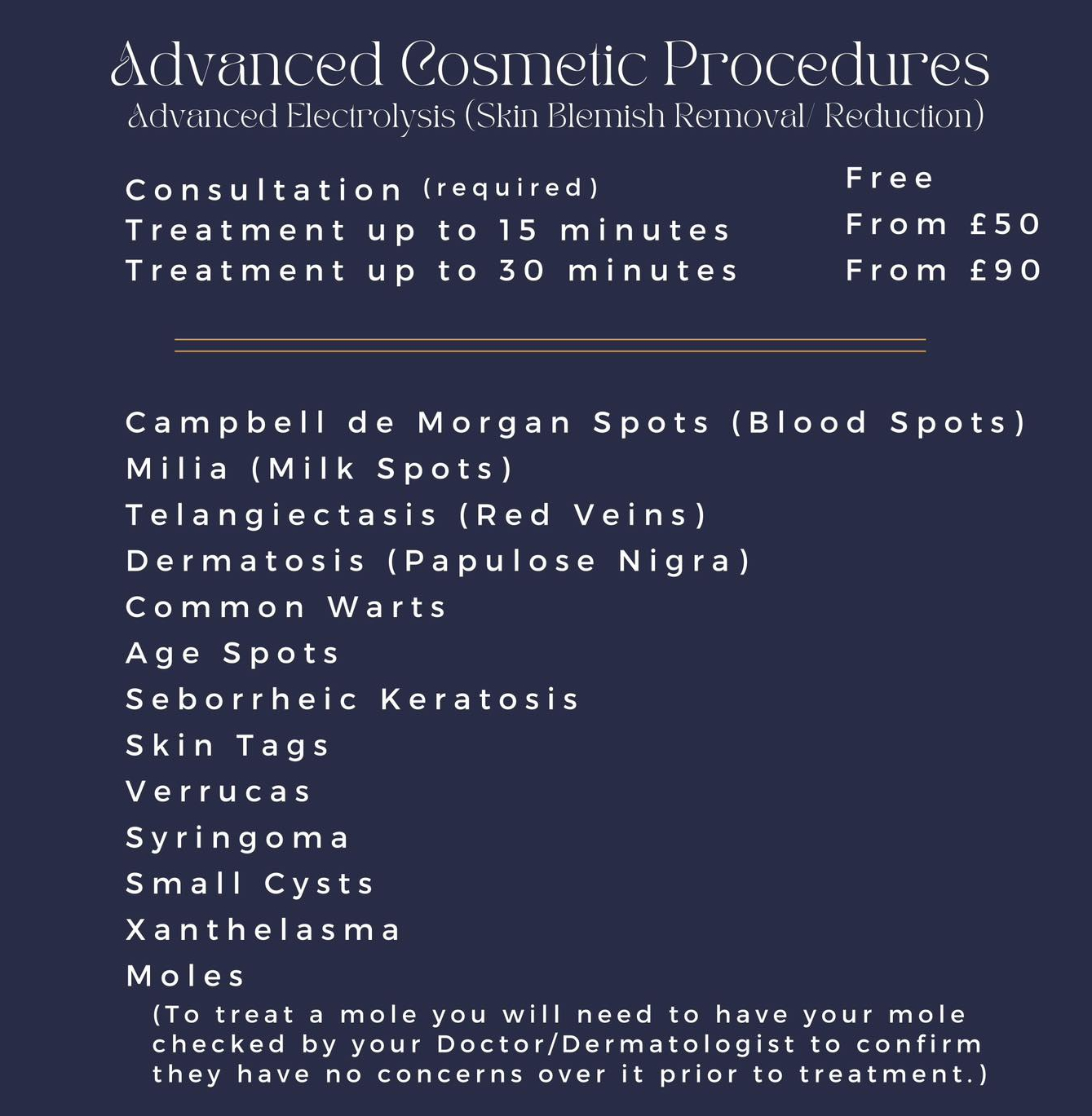
Things to consider before any treatment or procedure:
Do you have any known health conditions that we need to know about?
This could include any type of heart condition, allergies, circulatory disorders etc.
Are you preparing for a holiday?
You must have your treatment at least 4 weeks before you travel. The total healing process takes anywhere between 4-6 weeks and sun/sea salt/chlorine may hinder the healing process.
Skin Blemish Descriptions
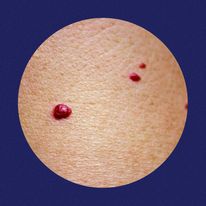
Blood Spots
These are also known as Campbell de Morgans or Cherry Angiomas, they are bright red spots on the skin and appear flat, raised or dome shaped. They are shiny and red and can vary from the size of a pin head to a 50 pence piece.
Cause
The cause of Campbell de Morgan is unknown but hereditary reasons and sun damage is often cited. They are most common on the trunk of the body and on people over the age of 30.
Treatment
A small probe will touch the surface of the skin, a slight burst of energy is expelled and a small stinging sensation may be experienced.
Aftercare
Following your treatment you may experience:
• A slight reddening/swelling of the skin in the area.
• Warmth in the area that has been treated.
• The skin may feel itchy as it heals.
• A small Campbell de Morgan may disappear immediately whereas large Campbell de Morgan may change colour
to a grey/beige then fade awav over a week or so. A larger Campbell de Morgan will, during treatment, form a scab which must be left to naturally fall away. Further treatment may be required for a larger Campbell de Morgan.
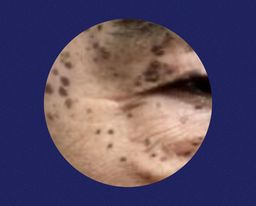
Dermatosis Papulosa Nigra (DPN)
This is a common condition consisting of one or many small, dark circular skin lesions, on the face and upper body which appear on darker skin types. Electrolysis is a safe, effective, quick and attordable method of treatment.
Cause
The cause of DPN is likely to be genetically determined.
Treatment
A small probe about the size of an eyelash is used to remove the Dermatosis Papulosa Nigras, a small burst of energy is expelled and a small stinging sensation is experienced.
Aftercare
Following your treatment you may experience:
• A slight reddening/swelling of the skin in the area.
• Warmth in the area that has been treated.
• Tiny crusts or scabs my appear which will eventually fall away naturally.
• The skin may feel itchy as the healing process takes place.
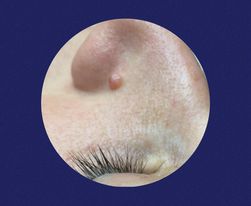
Moles
These are common small blemishes on the skin which usually appear in the first few decades of life in almost everyone. Moles vary in size and colour and often develop terminal hairs due to their developed vascular blood supply.
Electrolysis is a safe, effective, quick and affordable method of visibly reducing the appearance of totally healthy moles for sound reasons such as cosmetic, physiological or physical purposes.
Treatment
Mole reduction: the mole will he not be removed but will
be visibly reduced in size using high-frequency radio waves. Cells are composed of 80% liquid and exposure to the high frequency waves causes the mole to evaporate. Depending on the size of the mole will affect the amount of treatments required. The mole once treated, will be smooth and nearer the level of the surrounding skin.
Aftercare
The surface of the mole may initially appear white in the treated area and a scab will form which should be left to naturally fall away. It can take several weeks after the initial scab falls away before the fading and equalisation of colour is complete. Written aftercare will be given after treatment along with the appropriate Sterex after care product. A follow up appointment will be required several weeks after the procedure.
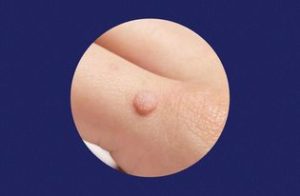
Warts
These are firm, raised growths often with a rough, dry, crusty surface. It can resemble a very small cauliflower or a solid blister. Rough to the touch, common warts may feature a pattern of tiny black dots which are small clotted blood vessels. They can develop individually or in clusters.
Cause
Warts are an infection of the epidermis with one of the
human papilloma viruses. They are highly contagious and are usually found on the hands but can he spread to other areas of the body.
Treatment
Each wart is treated individually, an energy is released over the whole surface area of the wart using a small probe tapping on the affected area, it is then inserted into the wart and the energy is released. A stinging heat sensation may be experienced during treatment. Results are highly effective. One fully healed the skin will be smooth. The size and the age of the wart will depend on
treatment time.
Aftercare
The appearance of the wart will change, it may turn white in colour initially and will then form into a scab which will fall away naturally. Written aftercare will be given along with the appropriate Sterex aftercare product. A follow up appointment will be arranged to assess results.
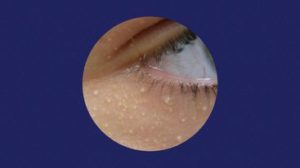
Milia
Milia are small, white spots that usually appear around the eyes, cheeks and the eyelids and are simply a blocked pore filled with a protein called Keratin which hardens. They are unsightly and become bothersome when multiple. Electrolysis is a safe, effective, quick and affordable method of treating milia.
Cause
The exact cause of Milia is unknown but they are often related to a high cholesterol diet, dry dehydrated skin, high intake of vitamin C, using products on the face which are too rich or acidic and there is possibly a heredity link.
Treatment
A small probe about the size of an eyelash is inserted into the centre of the Milia. A small stinging sensation will be felt and a popping sensation may be experienced as the Milia is treated.
Aftercare
Following your treatment you may experience:
• A slight reddening/swelling of the skin in the area
• Warmth in the area that has been treated
• The appearance of the Milia may change, it may whiten, became more pronounced and obvious or alternatively it can flatten at the time of treatment
• A tiny scab may appear which will eventually fall away naturally
• The skin may feel itchy as the healing process takes place
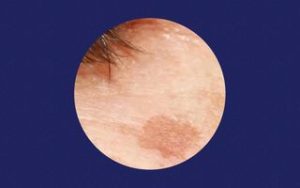
Age Spots
Age spots are flat pigmented blemishes that occur on the skin. They range in colour from light brown to darker brown and are located in areas most often exposed to the sun, particularly on the hands, face, shoulders, arms and forehead. They are harmless but considered cosmetically unattractive.
Cause
Age spots are associated with the natural aging process and exposure to U.V. light.
Treatment
A small probe about the size of an eyelash will touch the surface of the skin, a slight stinging sensation may be experienced whilst a minute section of the blemished skin is lifted and the skin colour underneath is observed. If healthy pink and unpigmented then the blemish can be removed successfully, however if the pigment continues down to the dermis the treatment will not go ahead as results will not be successful.
Aftercare
Following your treatment you may experience:
• A slight reddening/swelling of the skin in the area.
• Warmth in the area that has been treated.
• Only the fine transparent pigmented section of the skin will be removed and a scab will form.
• The skin may feel itchy as the healing process takes place.
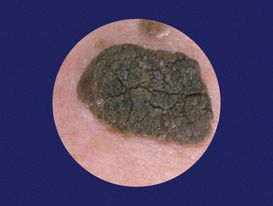
Seborrhoeic Keratosis
Seborrhoeic Keratosis are very common harmless skin lesions that appear during adult life. Seborrhoeic Keratosis may also be called basal cell papillomas, senile warts or brown warts. They are harmless and rarely become malignant. They begin as slightly raised, skin coloured or light brown spots. Gradually they thicken and take on a rough, warty surface. They slowly darken and may turn black. These colour changes are harmless but may result in the lesion looking like a melanoma (a type of skin cancer).
Cause
Seborrhoeic Keratosis or Senile Warts occur most often on the truck of the body, but they are also common on the face, head and neck and can be individual or numerous.
Cause is the natural aging process, sun damage and hereditary reasons.
Treatment
During treatment each Seborrhoeic keratosis is removed individually leaving the skin with a grazed appearance.
Aftercare
Following your treatment you may experience:
• A slight reddening/swelling of the skin in the area.
• Warmth in the area that has been treated.
• A scab will form.
• The skin may feel itchy as the healing process takes place.
• It can take several weeks after the initial scab sloughs oft before the fading and equalization of colour is complete and the final results are apparent.
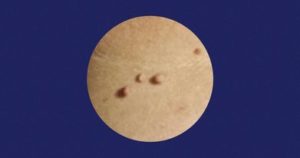
Skin Tags
Skin tags are common skin growths which resemble a small piece of soft hanging skin. The attachment size is usually smaller than the body of the tag. Individual or numerous they can be the size of a pin head to a marble or larger.
Cause
Skin tags are viral in nature and whilst not highly infectious they do seem to spread on certain individuals.
Skin tags are commonly found in areas of friction, for example around the neck, under the arms, on the chest, back, under the breast or in the groin area, they can also occur on the eyelids.
Treatment
Skin tag removal by electrolysis is a basic procedure that offers dramatic results. It is a highly effective way to get rid of skin tags on your face and body. The tip of the probe is used to treat the tag, a small burst energy is expelled and a slight stinging sensation experienced.
Through electrolysis you can experience freedom from skin tags that will not reappear.
Aftercare
Following your treatment you may experience:
• A slight reddening/swelling of the skin in the area.
• Warmth in the area that has been treated.
• The skin may feel itchy as it heals.
• Dependant on the size, amount and the location of the tag(s) they may be immediately removed or reduced in size. The latter will in a few days naturally slough off.
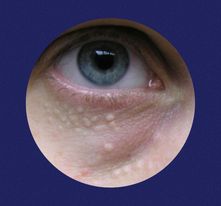
Syringoma
Syringoma are non-cancerous (benign) flesh coloured bump, usually found on the upper cheeks and lower eyelids.
Cause
Syringomas are completely harmless and are caused by the overgrowth of cells from sweat glands (eccrine glands). They usually develop on a skin type that has an oily complexion. Also commonly found on skins that are
often in a moist hot environment.
Treatment
The tip of a small probe (about the size of an eyelash) is introduced superficially into the skin. A small stinging sensation may be experienced as the Syringoma is treated.
Aftercare
Following your treatment you may experience:
• A slight reddening/swelling of the skin in the area
• Warmth in the area that has been treated.
• The appearance of the Syringoma may change, it may whiten in colour before it reduces.
• The skin may feel itchy as the healing process takes place
• A temporary scab or crust will form. On completion of the healing process this will slough off naturally.
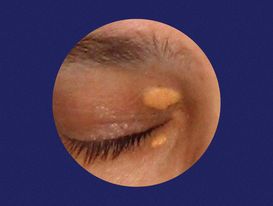
Xanthelasma
Xanthelasma are deposits of fatty materials, under the surface of the skin ranging in size from very small to one inch in diameter. Yellowish distinctive patches usually found around the eye area.
Cause
The exact cause of Xanthelasma is unknown. It is typically associated with an elevated cholesterol level.
Xanthelasma may appear anywhere on the body, but is most commonly seen on the eyelids. Treatment with electrolysis can visibly reduce the raised appearance although the colour remains unaffected.
Treatment
A small probe about the size of an eyelash will touch the surface of the skin, energy is released and a slight stinging sensation may be experienced. Xanthelasma may require more than one treatment.
Aftercare
Following your treatment you may experience:
• A slight reddening/swelling of the skin in the area.
• Warmth in the area that has been treated.
• The skin may feel itchy as the healing process takes.
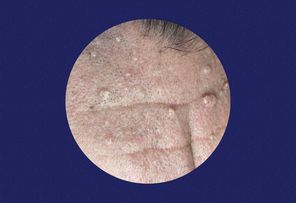
Sebaceous Hyperplasia
Sebaceous Hyperplasia is a common, non-contagious benign condition. It is inflammation of the sebaceous glands in adults of middle age or older. Lesions can be single or multiple and manifest as yellowish, soft, small papules on the face, particularly the nose, cheeks, and forehead.
Cause
Sebaceous Hyperpasia is a disorder of the sebaceous aland in which they become enlarged. the mav be present themselves as milky yellow doughnut shaped lesions.
Treatment
There are 2 techniques used to treat Sebaceous Hyperplasia:
A probe is used to scrape away excess skin leaving the lesion with a slight graze appearance
A probe is inserted into the Sebceous Hyperplasia in a verticle fashion drying up the contents. A slight tingling sensation may be experienced during either procedure.
Aftercare
Following your treatment you may experience:
• A slight reddening/swelling of the skin in the area.
• Warmth in the area that has been treated.
• The appearance of the Sebaceous Hyperplasia may change, it may whiten or flatten before it reduces.
• The skin may feel itchy as the healing process takes place.
• A temporary scab or crust will form. On completion of healing process this will slough off naturally.
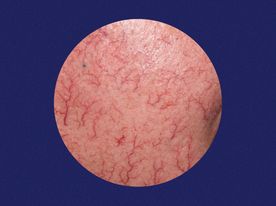
Telangiectasis (Red Veins)
Telangiectasis (Red Veins) Known professionally as Telangiectasia, red veins are commonly referred to as broken veins, dilated capillaries, thread veins or naevi. They are often found on the face and legs although can appear on the chest and rib area- front and back. The appearance is that of a very fine network of red wavy lines that lie very close to the surface of the skin. The condition will differ from person to person, it can be as minor as one capillary in an isolated area or as extreme as capillaries scattered across a larger area.
Cause
There are many possible causes of Telangiectasia, e.g. sun and UV damage, harsh weather exposure, pregnancy, certain medications, eating spicy foods, hormonal influences and hereditary links.
Treatment
The treatment consists of a minute pre-packed sterilised disposable needle that is applied lightly to the surface of the capillary, a low current is employed which produces a heating effect and when applied to the capillary the structure and its contents coagulate (dries up).
Aftercare
Following your treatment you may experience:
•A slight reddening/swelling of the skin in the area.
•Warmth in the area that has been treated
Pin dot crusting in the area that has been treated.
•The skin may feel itchy as it heals.
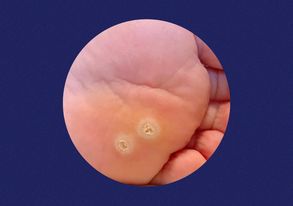
Verrucas
Verrucas develop on the soles and toes of the feet. A verruca starts as a tiny pink area which may be speckled with black dots and can become dark with a rough crumbly layer of the skin with a pepper pot appearance. Verrucas vary in size from a pin head to a large mosaic verruca covering whole sections of the sole and can be extremely painful. They are notoriously resilient to methods of removal but Electrolysis is a safe, effective, efficient and affordable method of treating them.
Cause
They are caused by the Human Papilloma Virus (HPV) which is highly contagious through direct person to person contact. The virus is thought to thrive in moist, damp environments such as swimming pools, changing room floors and communal shower areas. It is possible to contract verrucae simply by walking across the same floor area as someone with a verruca, especially if you have any small or invisible cuts or abrasions that make it easier for the virus to penetrate.
Treatment
The energy is released over the whole surface area of the verruca by the use of a small probe tapping over the affected area and a slight stinging sensation will be experienced. The probe is then inserted a number of times into the verruca and a sensation will be experienced. Treatment is a little uncomfortable but highly effective, however it may take more than one treatment to fully remove.
Aftercare
Following your treatment you may experience:
•A slight reddening/swelling of the skin in the area•
•Warmth in the area that has been treated•
•The appearance of the Verucca may change once treated, a scab may form and eventually fall away naturally•
•The skin may feel itchy as the healing process takes place.
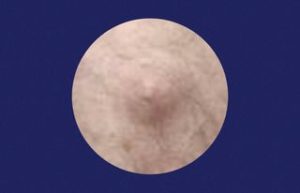
Sebaceous Cyst (Steatoma)
Sebaceous Cyst or (Steatoma) is retention of keratin trapped under the surface of the skin trapped within a sebaceous sac which is created from skin cells. They are painless, slow-growing, small bumps or lumps that move freely under the skin and to the trained eye, are usually easily diagnosed by their appearance.
Cause
Sebaceous cysts are formed often due to swollen hair follicles, blocked glands, skin trauma and higher levels of testosterone in the body. Keratin is an extremely strong protein found naturally within the body and is a major component in skin, hair, nails and teeth. It is predominantly made up of dead cells and amino acids which combine to form keratin and these contain unique properties rendering it hard or soft. If the dead cells are kept in good condition, they will serve as an insulating layer to protect the delicate new keratin below them.
The size of the cyst can vary from a pea to an egg, and the areas most affected are those where there are more sebaceous glands, i.e. face, chest, scalp and back.
Treatment
An electrolysis needle is inserted into the sebaceous cyst a number of times and the A/C, RF diathermy current is expelled and held within the skin overgrowth. The heat softens the contents of the cyst and immediately following the application of the current the contents (or some of the contents) may be able to be excised from the nodule.
Aftercare
Apart from generalized erythema (redness) the nodule may not look any different initially following treatment. Over the next week or so the nodule should reduce in size, irrespective of whether contents are expelled. Further treatment will almost certainly be required and no guarantees offered, however positive feedback is forthcoming from those treated by the use of electrolysis.
